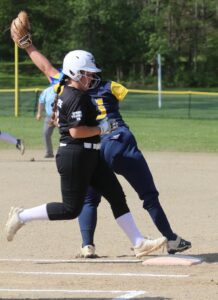Rebirth of a classic
Whether it is a classic movie, a favorite song, or even a once popular rifle cartridge, it is surprising how a little push can bring about a rebirth, pumping new life and popularity into something that was almost forgotten. Thus is the case with the .45-70 Government, or simply the .45-70. A few years ago, this cartridge was almost unknown to the average hunter outside collectors and experts. Not anymore.
The .45-70 was originally developed for the military, specifically the post-Civil War Indian Wars of the West. Soldiers took to it quickly, especially its knockdown power and overwhelming devastation against human foes. As these soldiers transitioned to civilian life, something happened that happens with almost any popular military round: Soldiers started using it as civilian hunters.
Not only were these former soldiers familiar with the platform, but it also provided the power needed to take down any North American big game they might encounter. Deer, bear, elk, and even bison soon found themselves on the losing end of the .45 caliber, 400-500 grain projectile pushed by 70 grains of black powder. It would remain a favorite until the early 1900s, handed down to the next generation who learned to shoot and hunt from their veteran mentors.
So, what happened? First, there were advances in technology and ballistics. New cartridges were developed that provided similar performance with additional range and less recoil when paired with smokeless powder. Of course, another war was fought with a new generation of veterans. As with the cavalry soldiers responsible for the .45-70’s popularity, this new breed leaned more towards the modern calibers and platforms that had served them well in combat.
As technology advanced and soldiers returned from the battlefield, the .45-70 continued to slip in popularity. Those who already owned one continued to take big game with confidence, but new shooters had so many other choices that the .45-70 became less likely to be a top choice. By the 1970s, only a handful of manufacturers were even offering it as an option, and ammunition choices were both limited and expensive. But things were about to turn a corner.
Recently, a couple of things happened that caused hunters, once oblivious to the cartridge that won the West, to reconsider their hunting capabilities. First, increasing areas started to require straight-wall cartridges for hunting. Second, firearms and ammunition manufacturers started offering modern versions that were both affordable and reliable. While some hunters turned to the newer platforms, such as the .350 Legend or .450 Bushmaster, the lever action .45-70 captured the heart of a growing number of shooters. At last year’s bear camp, almost a quarter of those present were outfitters with one, and nearly everyone else wanted a chance to try one out.
How does the modern .45-70 stack up regarding big game hunting? Today’s .45-70 is different than the original. Modern ammunition varies when it comes to bullet weight, with it ranging from 250-500 grains. Of course, it still utilizes the .45 caliber bullet, but it is now propelled by between 42-60 grains of smokeless powder. However, the result is a muzzle velocity topping 2000 fps and a monster stopping 3000 + ft/lbs. of muzzle energy. More than enough to knock down anything you will encounter in Pennsylvania’s woods.
So, what is the downside? First, there is the recoil. With over twice the felt recoil of the .30-30, this is not a round for the faint of heart. Even with a muzzle break or suppressor to soften the blow, every shot you take will be felt. Second, there are severe limitations when it comes to effective range. While the .45-70 excels at close range, it has a maximum effective range of less than 200 yards, after which this trajectory and energy drop like a rock tossed from a tree stand. At 300 yards, the average .45-70 round will see a 23-inch drop and deliver only around 1000 ft/lbs. of energy. A good choice for closer range hunting in wooded areas of home, not so good if you will be traveling out west.




